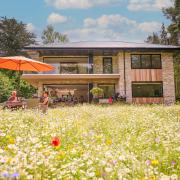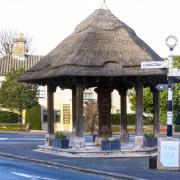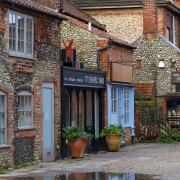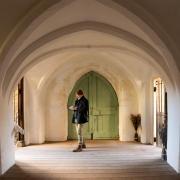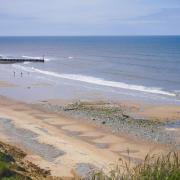A mile of golden daffodils links the twin settlements of Honing and Crostwight every March
A mile of golden daffodils
An avenue of daffodils stretches from Honing church along Long Lane towards Crostwight each spring, creating a gold and yellow link between the two ancient villages near Stalham.
The host of golden daffodils were originally spare bulbs scattered along the verges by a farmer. Just two flowered that first spring but over the decades the daffodils have multiplied and the display is now so glorious that it is the centre-piece of an annual fundraising day for Honing and Crostwight churches.
This year’s Daffodil Day is on Sunday March 26 when visitors are invited to stroll along the daffodil avenue or take a ride behind a vintage tractor to see the flowers.
Two ancient churches
Tiny Crostwight church stands on a footpath through fields. It lost its village centuries ago and much of its tower more than 100 years ago. But inside the beautiful flint and thatch building, still regularly used for worship, are some of Britain’s most important medieval wall paintings.
Saints and angels, characters from the Bible and from folklore, and local people and wildlife were painted across the interior of the church almost 700 years ago.
A tree, its branches heavy with demons displaying pictures of the seven deadly sins grows from the gaping jaws of a hellish monster; the Easter story is told in nine scenes; St Christopher, patron saint of travellers, stands opposite the entrance door, ready to bless passers-by.
The pictures were painted over in the 16th century and rediscovered 300 years later - when each was faithfully copied before they were whitewashed over again. Some were permanently destroyed and now exist only as drawings and watercolours in the British Library.
Remarkably, the congregation of this tiny church recently raised tens of thousands of pounds in grants and gifts to restore the precious, disintegrating paintings. The newly conserved pictures can be seen during daylight hours and churchwarden Peter Williams and his wife Fiona have produced two beautifully illustrated guides.
Railway art
Honing’s old railway line is about to become part of a 250-mile sculpture trail around Norfolk.
A sculpture called Honing Passage will be installed this month as part of the Norfolk Way Art Trail.
The line through Honing is part of the Weavers’ Way long-distance footpath and has been linked into paths across Norfolk in a European Union-funded project to encourage off-season tourism. More sculptures are planned for Diss Mere, Reedham Ferry and Norwich.
The remains of Honing’s Victorian station, including platforms, level crossing gates and cobbled cattle pens, are looked after by the North East Norfolk Conservation Volunteers. Much of the station was dismantled after 1959 but a signal box, saved and reassembled by the Barton House Railway, still stands in Wroxham.
Canal
Norfolk’s only canal with locks runs through the parish of Honing with Crostwight. The North Walsham and Dilham Canal opened almost 200 years ago for cargo wherries. There was even a cabbage wherry carrying vegetables to Great Yarmouth.
With the arrival of the railways the cargo, and eventually even the water, drained away and the canal seemed destined to sink back into the landscape - until volunteers launched an ambitious restoration project.
Crumbling locks, canal banks and mill ponds were cleared and now the North Walsham and Dilham Canal Trust even offers solar-powered boat trips along a mile of the reed-fringed, wildlife-rich waterway.
Museum shop
Packets, pots, tins and jars of groceries sold a century ago still fill the shelves of Honing’s village shop. Historic advertisements add to the atmosphere of the Old Shop Museum which opens occasionally to raise money for charity.







